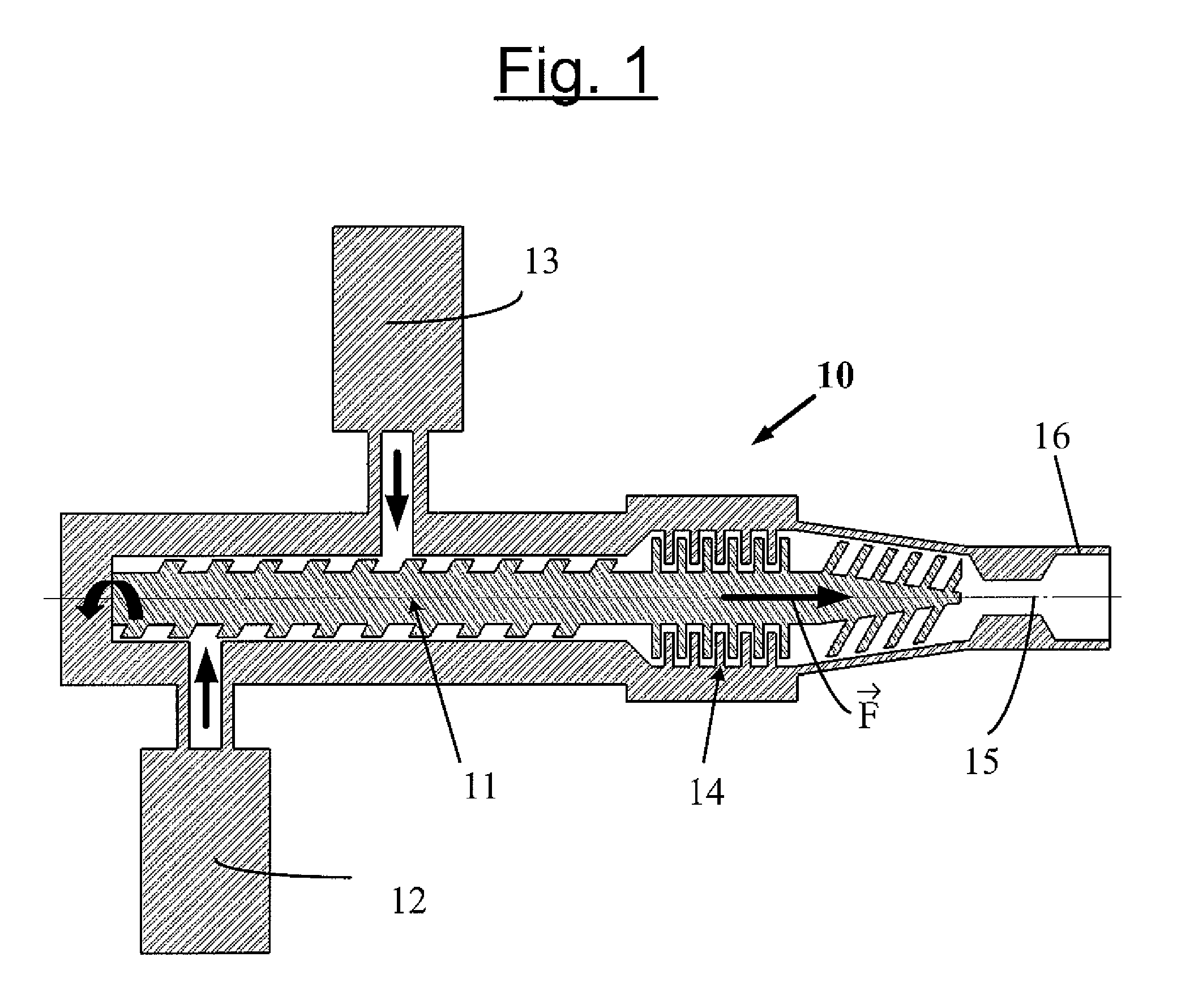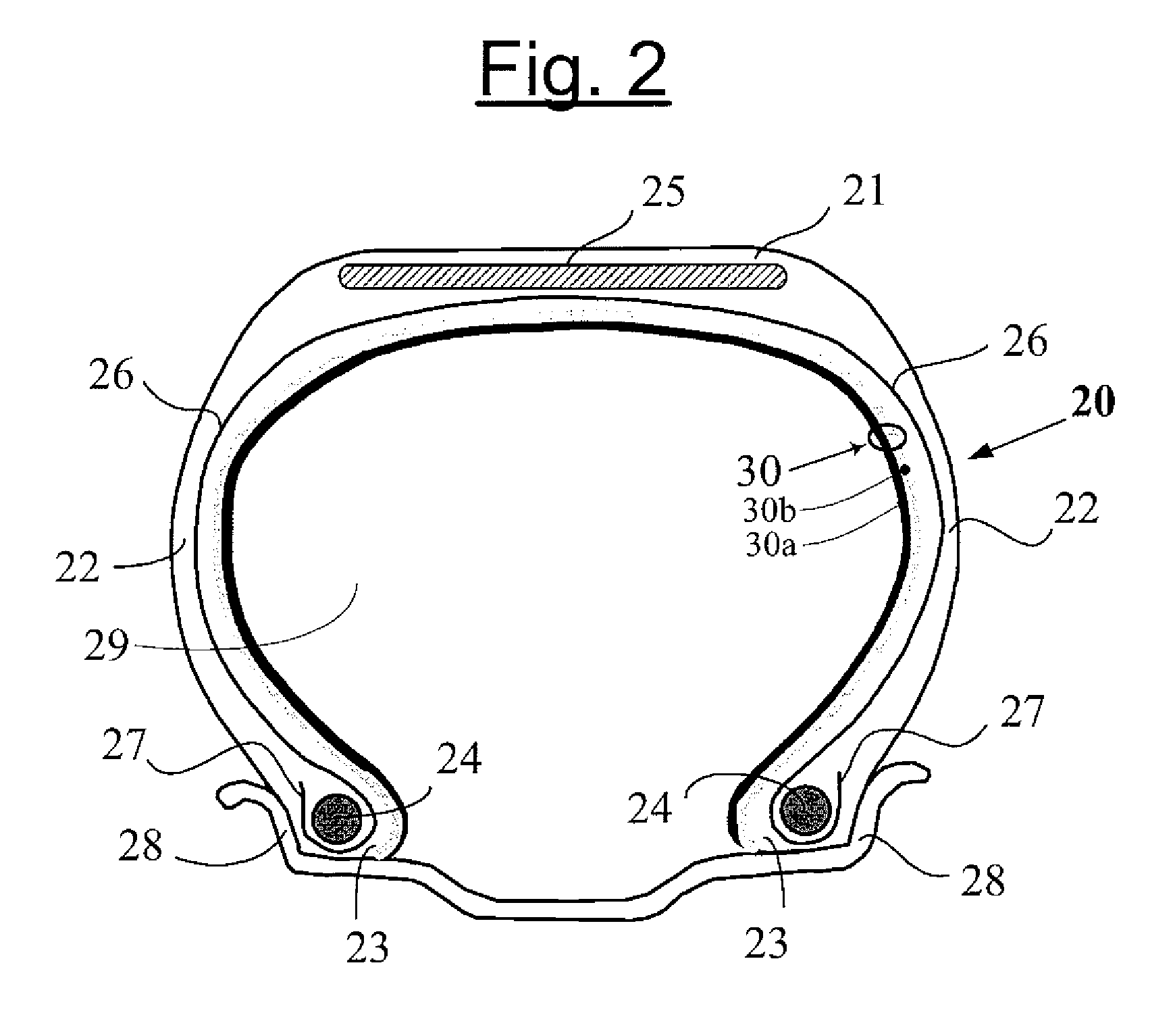Process for manufacturing a self-sealing composition
a composition and self-sealing technology, applied in the field of self-sealing compositions, can solve the problems of nailing, tire sealing, difficult development, etc., and achieve the effect of reducing, or at the very least substantially reducing, the various
- Summary
- Abstract
- Description
- Claims
- Application Information
AI Technical Summary
Benefits of technology
Problems solved by technology
Method used
Image
Examples
Embodiment Construction
[0022]In the present description, unless expressly indicated otherwise, all the percentages (%) indicated are % by weight.
[0023]Moreover, any range of values denoted by the expression “between a and b” represents the range of values going from more than a to less than b (i.e. with the limits a and b excluded), whereas any range of values denoted by the expression “from a to b” means the range of values going from the limit “a” up to the limit “b”, i.e. including the strict limits “a” and “b”.
I-1. Process of the Invention
[0024]The process according to the invention is therefore characterized in that it comprises at least the following two steps:[0025]a) firstly a masterbatch comprising at least one diene elastomer and a hydrocarbon resin with a content greater than 30 phr is manufactured, by compounding these various components in a mixer at a temperature or up to a temperature called the “hot compounding temperature” or “first temperature” which is above the softening point of the h...
PUM
| Property | Measurement | Unit |
|---|---|---|
| Tg | aaaaa | aaaaa |
| temperature | aaaaa | aaaaa |
| temperature | aaaaa | aaaaa |
Abstract
Description
Claims
Application Information
 Login to View More
Login to View More - R&D
- Intellectual Property
- Life Sciences
- Materials
- Tech Scout
- Unparalleled Data Quality
- Higher Quality Content
- 60% Fewer Hallucinations
Browse by: Latest US Patents, China's latest patents, Technical Efficacy Thesaurus, Application Domain, Technology Topic, Popular Technical Reports.
© 2025 PatSnap. All rights reserved.Legal|Privacy policy|Modern Slavery Act Transparency Statement|Sitemap|About US| Contact US: help@patsnap.com


